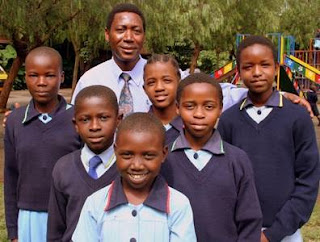Tanzania has the best record of all three countries in its efforts to control corruption and also scores best under the "Rule of Law" category. Both Kenya and Tanzania score well under the "Voice and Accountability" section, while Uganda is said to be the least stable politically.
Tanzania is also said to be the country that rates highest in terms of government effectiveness.
The ratings are based on the views of East African citizens, businesses and other survey results taken over the past 10 years.
This is really good news for economic development in Tanzania because research shows a strong correlation between higher growth and reduced corruption.
I have blogged here about recent anti-corruption legislation in Tanzania and I am now interested to see that the U.S. Department of Justice and the U.S. Agency for International Development (USAID) have run 3-day training workshops for Tanzanian Prevention and Combating of Corruption Bureau (PCCB) prosecutors. The training brings prosecutors up to speed on the new Prevention and Combating of Corruption Act and offers techniques for diagnosing a case, developing a theory of the crime, getting evidence admitted in court, and speaking persuasively in court.
 PCCB Director General Edward Hosea and DPP Assistant Director Augustine Shio (speaking) participate in PCCB prosecutor training
PCCB Director General Edward Hosea and DPP Assistant Director Augustine Shio (speaking) participate in PCCB prosecutor trainingThrough case studies and presentations by an experienced former U.S. federal prosecutor and talks by senior prosecutors and judges from the Department of Public Prosecution (DPP) and the Court of Appeal, the training is expected to bolster the number of successful corruption prosecutions carried out by the PCCB and DPP.
USAID is also providing PCCB with support for the development of an electronic case management system, information technology equipment, and vehicles to facilitate field investigations.
A lot of hard work like this goes into building the capacity for better governance. Tanzania is putting the hard work, with the help of the international community.
In the same way, the School of St Jude is putting in a lot work to develop better teaching practices so that bright children from poor families have the chance of a good education.
Click here to subscribe to this blog.



































